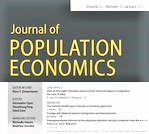A new paper published in the Journal of Population Economics shows that the share of students in a class who are low achievers has a significant negative impact on the academic achievement of regular students.
Read more in:
Peer effects of low-ability students in the classroom: evidence from China’s middle schools
Bin Huang, Rong Zhu
Journal of Population Economics (2020) 33, Issue 4: 1343-1380
FREE READLINK
Author Abstract: This paper examines the causal effects of the proportion of low-ability students in the classroom on the academic performance of regular students, exploiting random assignment of students to classes within middle schools in China. We show that the share of students in a class who are low achievers has a significant negative impact on the academic achievement of regular students in the seventh grade. The peer effects are heterogeneous along their achievement distribution, with the strongest adverse impact at the bottom end but no discernable impact at the top end. In contrast, there is no evidence that low-ability students influence any part of the achievement distribution of regular students in the ninth grade. Therefore, peer effects in academic outcomes can vary with the length of regular students’ exposure to the same group of low-ability classmates. We further show that the differences in peer effects of low-ability students in seventh and ninth grades are driven by the adjustments of students’ friendship formation and learning environment when approaching the completion of middle school.
Access to the newly published complete Volume 33, Issue 4, October 2020.
LEAD ARTICLE OF ISSUE 4:
Yun Qiu, Xi Chen & Wei Shi, Impacts of social and economic factors on the transmission of coronavirus disease 2019 (COVID-19) in China
Journal of Population Economics 33, 1127–1172 (2020). OPEN ACCESS

Ends;
